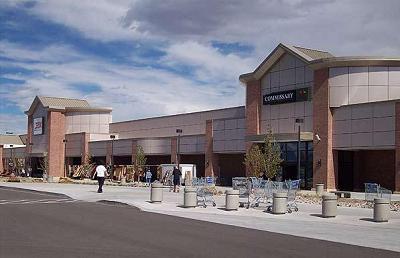 Bejarano Construction Services is an interior build-out subcontractor in Texas. They specialize in metal framing, drywall and finishing, focusing on commercial and government projects from 20,000 to 100,000 square feet. They find most of their jobs through invitations from general contractors. All of their work is competitive bid. We recently spoke with their senior estimator, Gerald Shaffer.
Bejarano Construction Services is an interior build-out subcontractor in Texas. They specialize in metal framing, drywall and finishing, focusing on commercial and government projects from 20,000 to 100,000 square feet. They find most of their jobs through invitations from general contractors. All of their work is competitive bid. We recently spoke with their senior estimator, Gerald Shaffer.
Gerald started in construction through a framing union apprentice program. He worked his way up to journeyman, foreman and project manager before focusing on estimating. His first estimates were with paper plans, scales and yellow pads. A few years ago, he saw the possibilities of measuring directly from electronic plans. He test drove every electronic takeoff program he could find before settling on eTakeoff. He said if offered “superior value and ease of use”.
Gerald has been using the Premier version of eTakeoff for several years. He says that eTakeoff has doubled his productivity but mostly it has improved his accuracy. Before using eTakeoff, a project estimate would result in “pages of notes on yellow paper”. Relating the notes to the different drawings and areas within the drawings was tedious and error prone. With eTakeoff, there’s no doubt about which measurement goes with which wall. Gerald uses annotations to highlight issues that need to be addressed. He’s going to look into using eTakeoff’s issue management too. Working from home, Gerald gets his plans from Bejarano’s FTP site so he makes heavy use of eTakeoff’s integrated FTP capability. He laughed about the stacks of CDs he’s got left over from the “old days”. He says he “never” uses paper plans any more.
Gerald makes heavy use of a limited number of eTakeoff features. When digitizing, he frequently uses disconnected points, two point lines, two point rectangles and arc creation. He started using eTakeoff before we supported extra drawing windows so he got in the habit of running multiple copies of eTakeoff with a plan view on one and elevation on the other. He has two large monitors so screen space isn’t an issue. He does most of his navigation using the Bird’s Eye window. And he “loves” the crosshairs.
Gerald uses the Quantity Worksheet (a Premier feature) to organize his measurements. He has a worksheet template that handles all the work Bejarano usually does. He creates measurements and assigns them to the worksheet as he goes. Items in the worksheet specify a trace. When the measurement is assigned to the item the measurement trace is changed to match the item trace. So he avoids the trace selection step. When he finishes his takeoff, he copies the entire Quantity Worksheet to Excel. In his Excel template, he uses the function “SUMIF” to grab quantities by bid code from the quantity worksheet data.
During our interview, we discussed a number of eTakeoff features he’s not using currently but might be useful. The major one is the Excel integration. Instead of dragging text to his spreadsheet, he could drag links. Or he could set up links in the template so that no dragging is necessary. Gerald intends to do this when he gets some free time.
Another possibility is to use Issue Management instead of or in addition to creating annotations for issues. With just annotations, you have to review each drawing to spot the annotations. With issues, you can bring up a list of issues then drill down to the drawings, measurements and annotations associated with an issue. Another alternative would be to add a “To Do” item to his quantity worksheet and assign measurements and annotations there.
Extensions could do advanced measurement calculations. This could range from simple wall areas to much more complex extensions. Another eTakeoff user, Chad Langhans, has developed a collection of extensions and quantity worksheet templates for lumber framing estimating. Some of his extensions are over 100 lines long.
Gerald, like many users, accumulates projects during the year then purges completed projects at year end. Toward the end of the year, his drop-down list of projects can get pretty long. We pointed out that the recently released project list will let him hide obsolete projects then quickly un-hide them if needed. At year end, it would let him select the projects he’s going to delete and export them before they’re deleted.
We asked Gerald what new features he’d like. He said he’d like to have an easy way to add page descriptions to more easily navigate through multi-page PDF files. We’ll get to work on that.